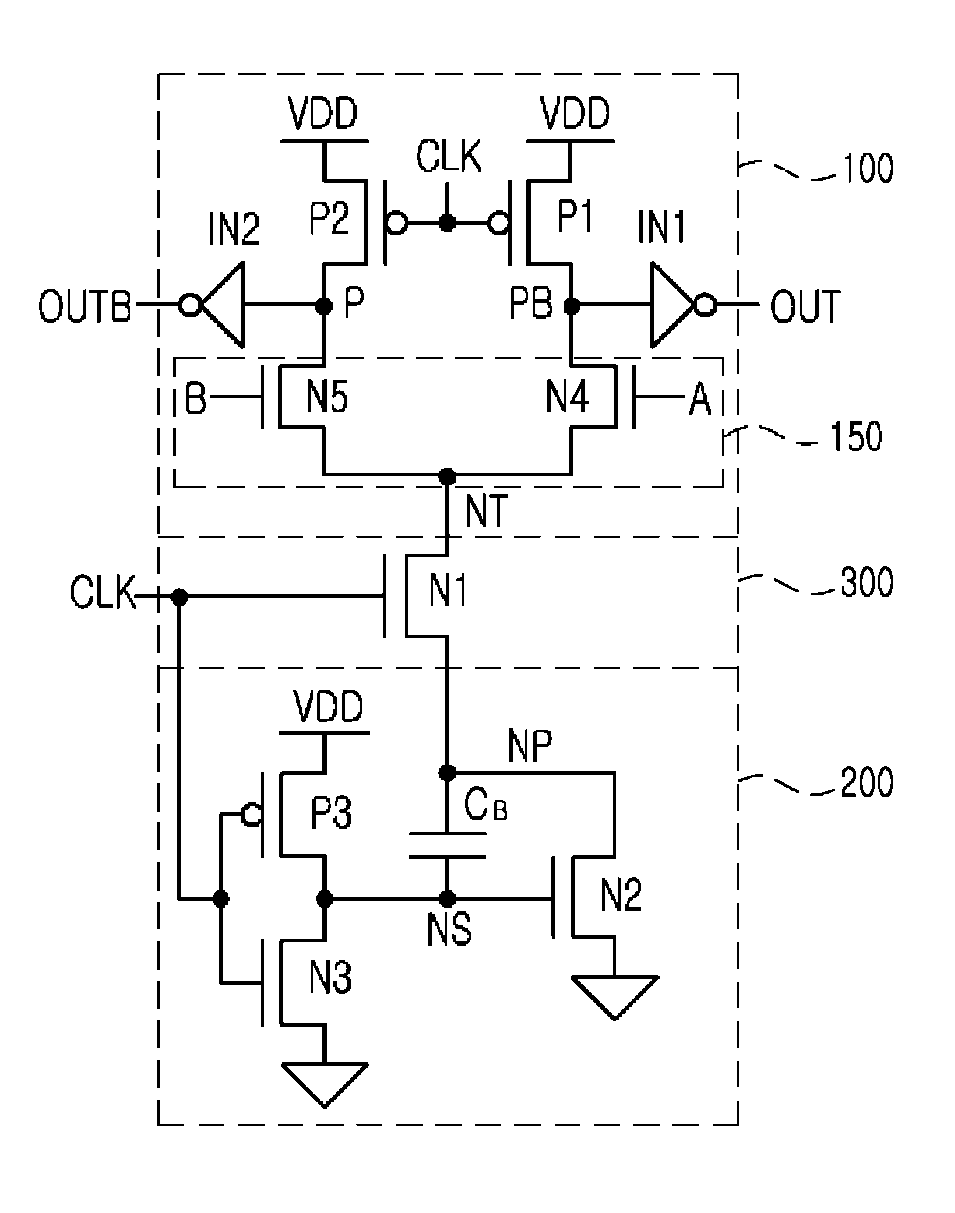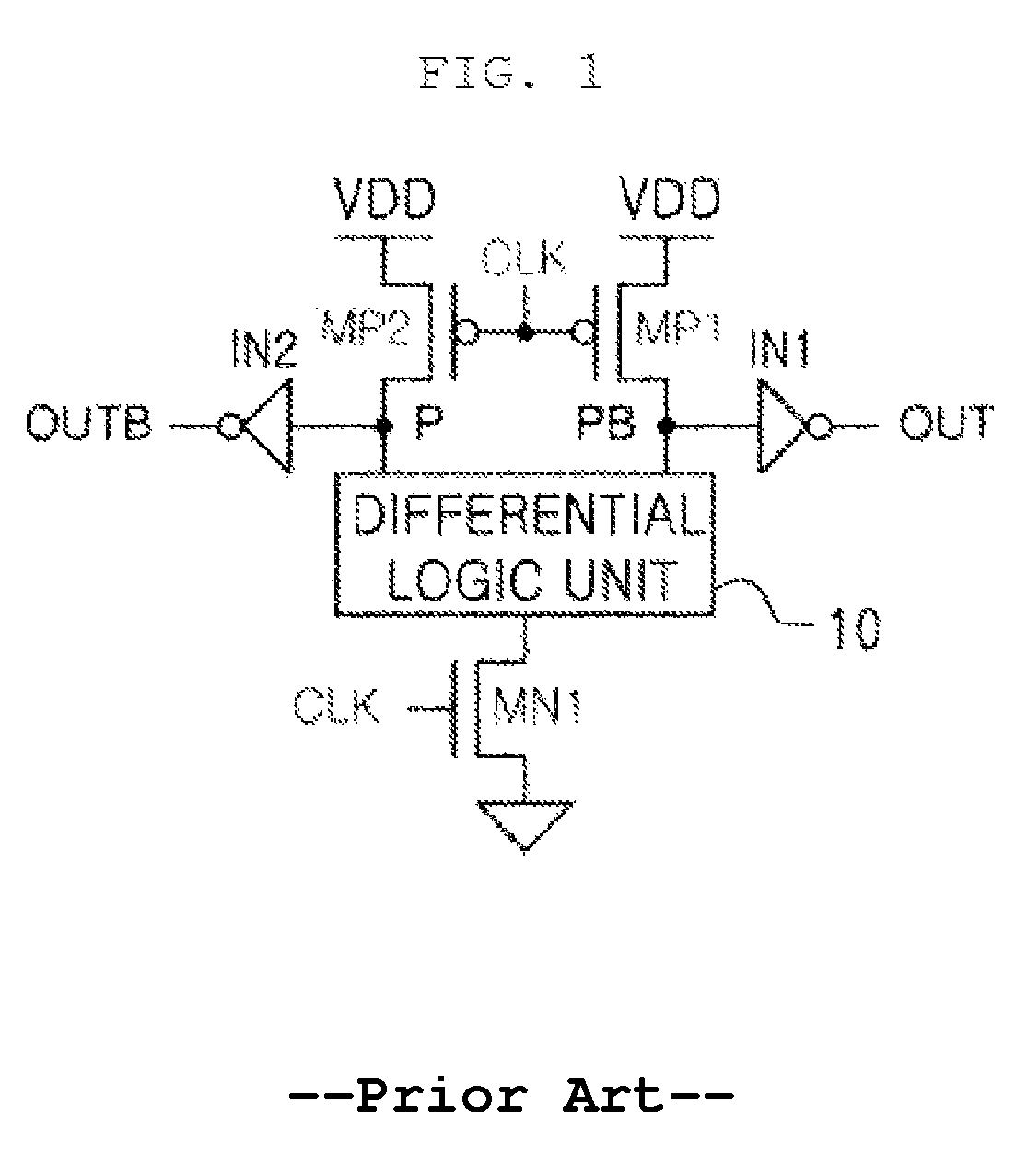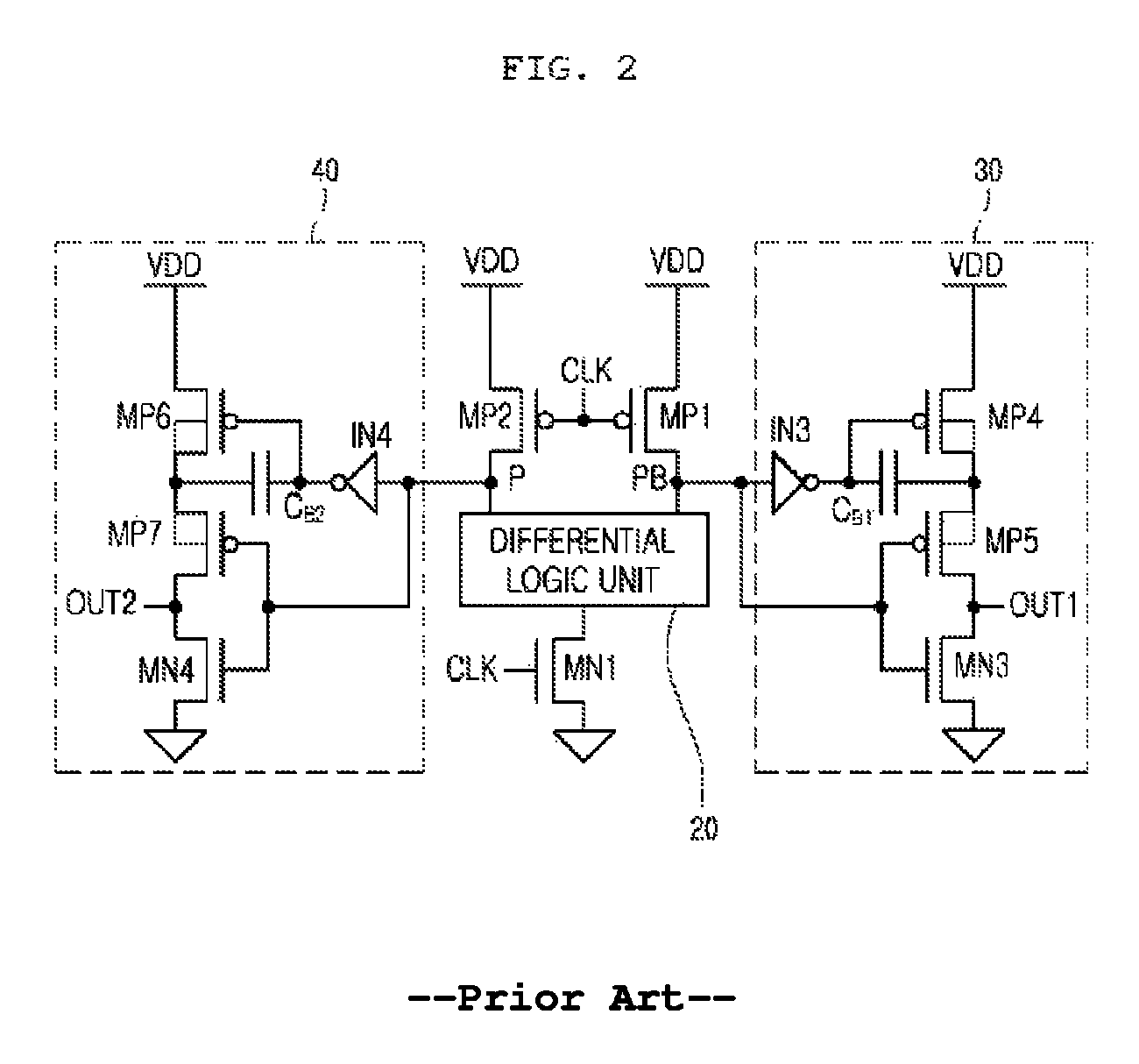CMOS differential logic circuit using voltage boosting technique
a technology of differential logic and voltage boosting, which is applied in logic circuits, pulse techniques, reliability increasing modifications, etc., can solve the problems of extreme voltage scaling that is not acceptable, the operating speed of the transistor is greatly reduced, and the approach is limited to use, so as to improve the energy efficiency of high-speed operation and prevent the effect of reducing the operating speed
- Summary
- Abstract
- Description
- Claims
- Application Information
AI Technical Summary
Benefits of technology
Problems solved by technology
Method used
Image
Examples
Embodiment Construction
[0054]Reference will now be made in greater detail to a preferred embodiment of the invention, an example of which is illustrated in the accompanying drawings. Wherever possible, the same reference numerals will be used throughout the drawings and the description to refer to the same or like parts.
[0055]An exemplary embodiment of a CMOS differential logic circuit using a voltage boosting technique (BCDL) in accordance with the present invention is described below with reference to the accompanying drawings.
[0056]FIG. 3 is a circuit diagram of a CMOS differential logic circuit using a voltage boosting technique in accordance with the present invention. The CMOS differential logic circuit includes a precharge differential logic unit 100, a voltage-boosting unit 200, and a switching unit 300.
[0057]The precharge differential logic unit 100 includes first and second PMOS transistors P1 and P2, a differential logic tree 150, and first and second inverter drivers IN1 and IN2. The different...
PUM
 Login to View More
Login to View More Abstract
Description
Claims
Application Information
 Login to View More
Login to View More - R&D
- Intellectual Property
- Life Sciences
- Materials
- Tech Scout
- Unparalleled Data Quality
- Higher Quality Content
- 60% Fewer Hallucinations
Browse by: Latest US Patents, China's latest patents, Technical Efficacy Thesaurus, Application Domain, Technology Topic, Popular Technical Reports.
© 2025 PatSnap. All rights reserved.Legal|Privacy policy|Modern Slavery Act Transparency Statement|Sitemap|About US| Contact US: help@patsnap.com



